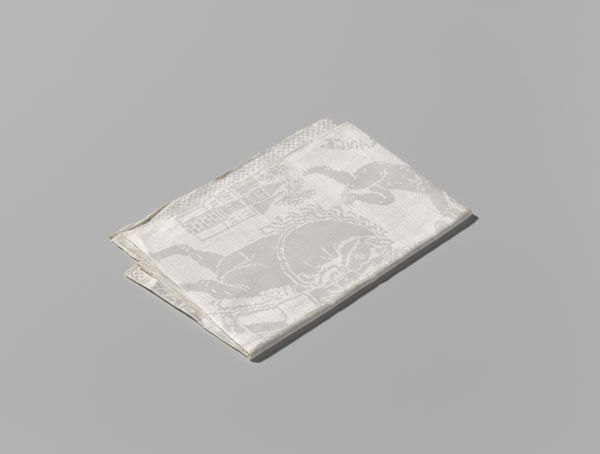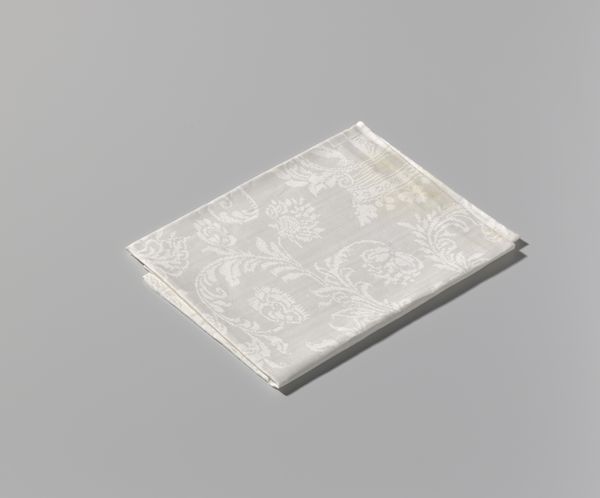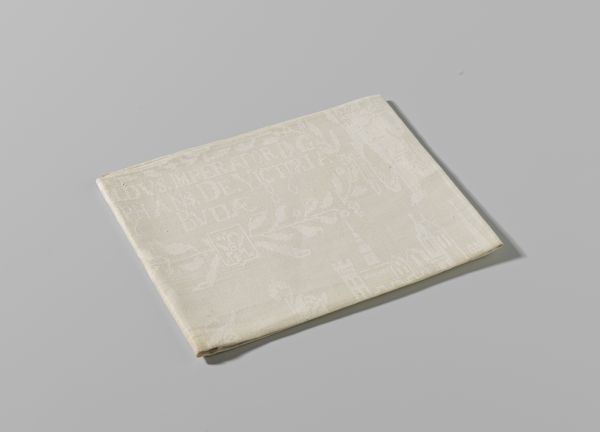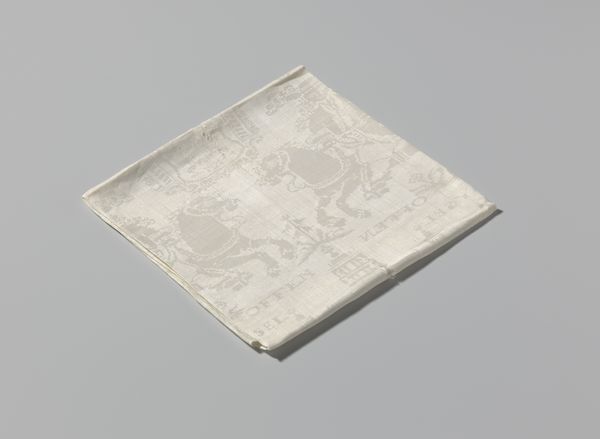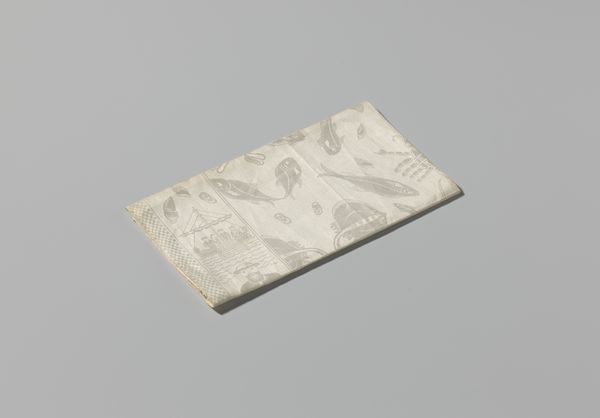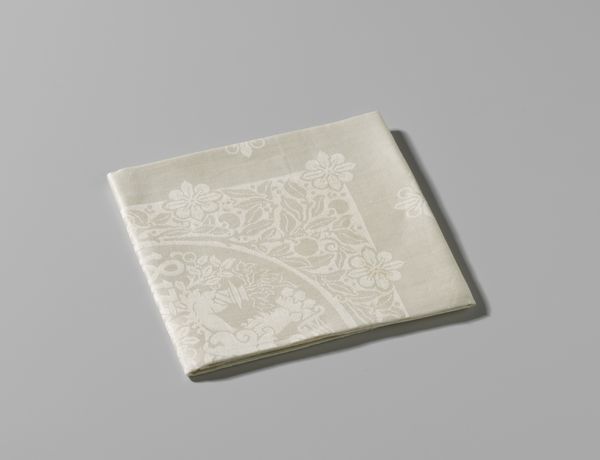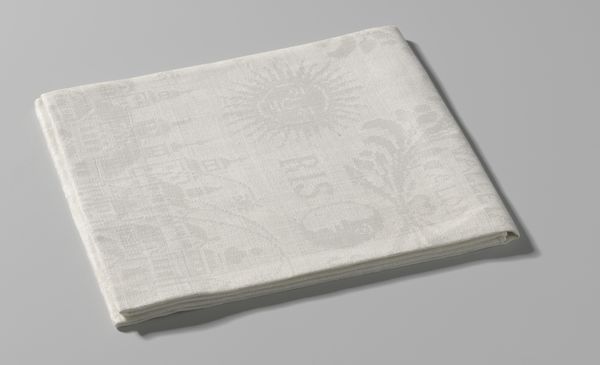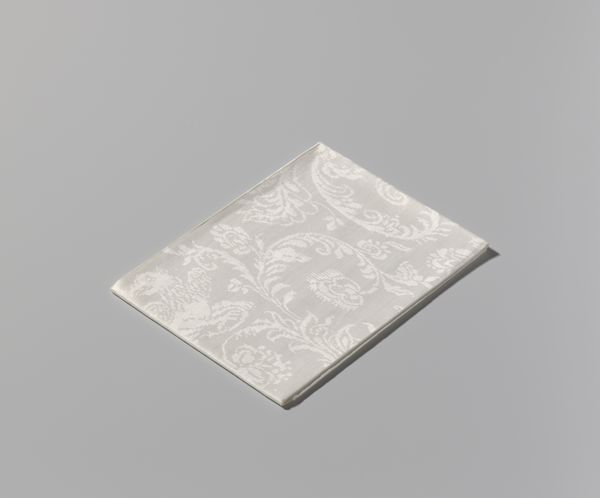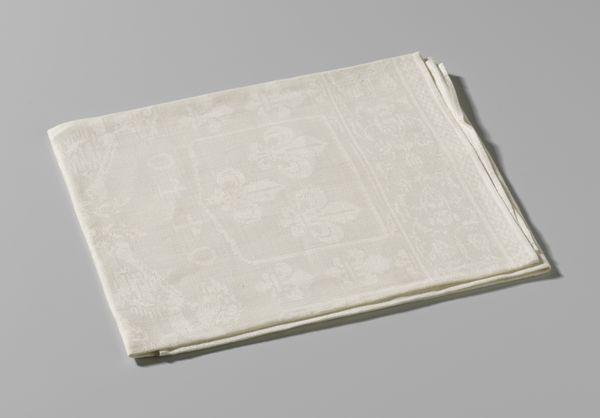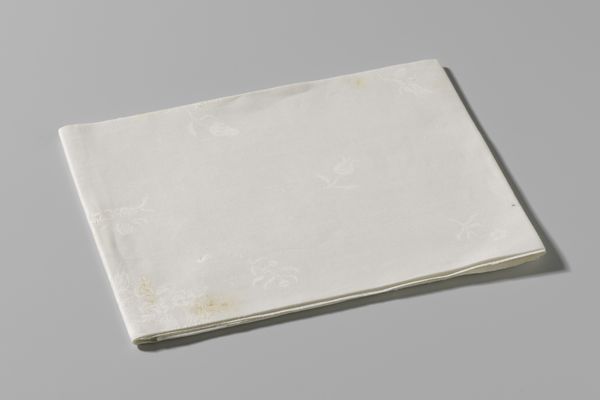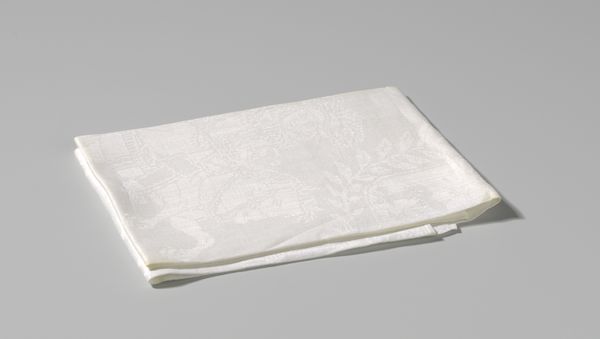
weaving, textile
#
weaving
#
textile
Dimensions: height 115 cm, width 87 cm
Copyright: Rijks Museum: Open Domain
This cloth napkin, decorated with cherubs, was likely made in Europe, though its exact origin is unknown. Objects like this, while seemingly simple, reveal a great deal about the social and economic life of their time. Napkins were not merely functional items; they were markers of status and refinement. The presence of cherubs, or 'amortjes,' taps into a rich visual culture rooted in classical mythology and Christian iconography. The cherub motif gained popularity during the Renaissance, often symbolizing love, innocence, or divine presence. The careful arrangement of the table, and the quality of linens, were ways for the rising bourgeoisie to emulate aristocratic customs, signaling their own success and cultural capital. Understanding the history of textiles, design motifs, and dining etiquette can provide valuable insights into the social structures and aspirations of past societies. Catalogues of household goods, etiquette manuals, and even literature can help us piece together the cultural significance of seemingly ordinary objects like this napkin.
Comments
No comments
Be the first to comment and join the conversation on the ultimate creative platform.
